Austria
For some, Austria is the better Germany, for others it is an idiosyncratic country in the mountains. In many places you feel like you’ve been thrown into a traditional homeland movie. Church towers in an onion look, stylish buildings in the most beautiful architectural mix, food like on a hill farm and the mountains, which, apart from Vienna, are almost everywhere in the background on the horizon. It is almost impossible to free oneself from the clichés of an ideal, mountainous world before traveling to Austria. The truth is: Austria lives from these clichés. Mozart, Sissi, Hundertwasser, Falco, mountains, Kaiserschmarrn and Viennese Classicism. All of this is national culture, all of it is inextricably linked to Austria. And all of this is marketed and exploited.

On our way through to Serbia, we make a stopover at Lake Neusiedl. A huge campsite, a pebbly beach, withered meadows and lawns. In Podersdorf, the tourists queue up in front of the ice cream parlor. Although there is still an inhabited town center and real life, most of the houses we walk past are vacation huts.
The usual hustle and bustle of capitalist communism prevails on the campsite. Everyone has the same pitch, everyone has the same sanitary facilities, everyone enjoys the same view of the lake. But some are more equal than others, because everyone “camps” in their own way. We in the simple roof tent. Young people in small ground tents, as long as the wine is flowing. Families in converted vans and pensioners in luxury campers weighing tons. The sunset is accompanied by the shouts of children playing and music from small Bluetooth speakers. There is no universal definition of a vacation.
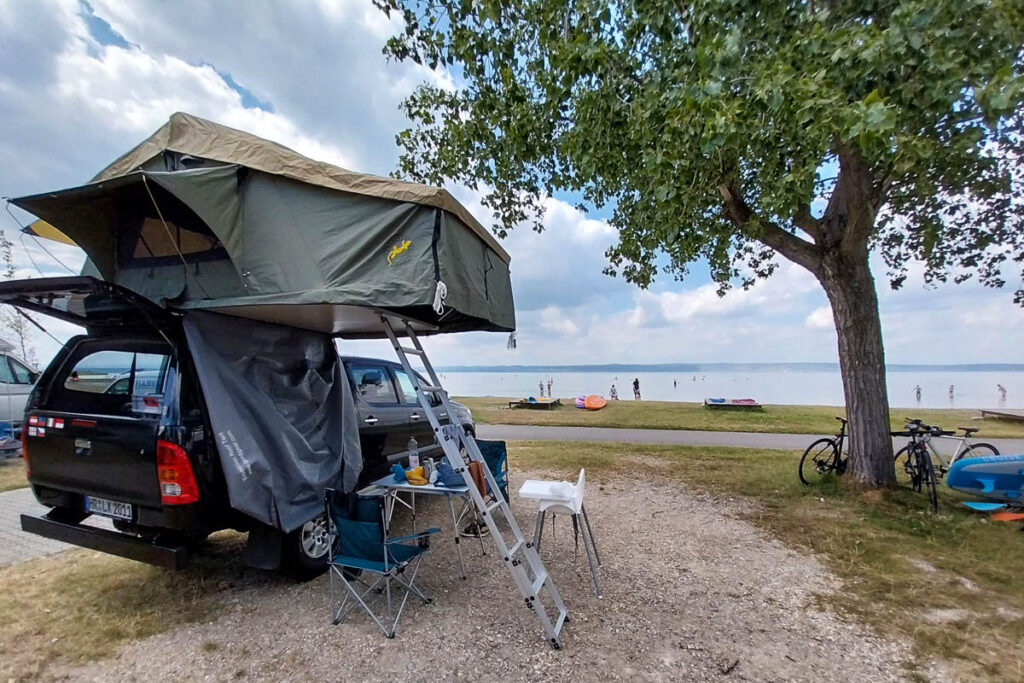
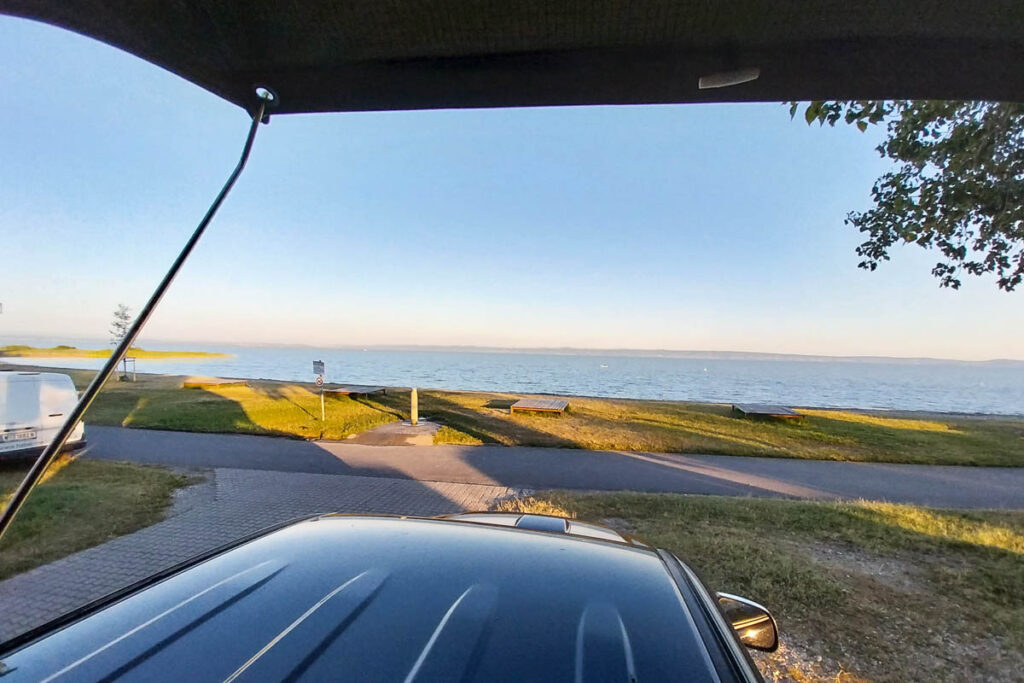
At first glance, Vienna comes across as a stuffy coffee city. Castles, Sachertorte and pastry shops, dusty monarchies and yawning history lessons – the ideal destination for a coach trip for retired teachers. But after a day at the latest, Vienna certainly presents itself as a modern, sometimes hip, city. A look beyond neo-baroque, Renaissance and Art Nouveau reveals courageous, avant-garde architecture. Small alleyways and backyards offer youth- and subculture. The peripheral and residential districts provide an insight into creative urban planning and experimental spatial concepts. And it soon becomes clear that this is precisely why Vienna is so appealing. It rejects the rushed big city mentality and instead relies on classic coffee houses that exude a yearning coziness.
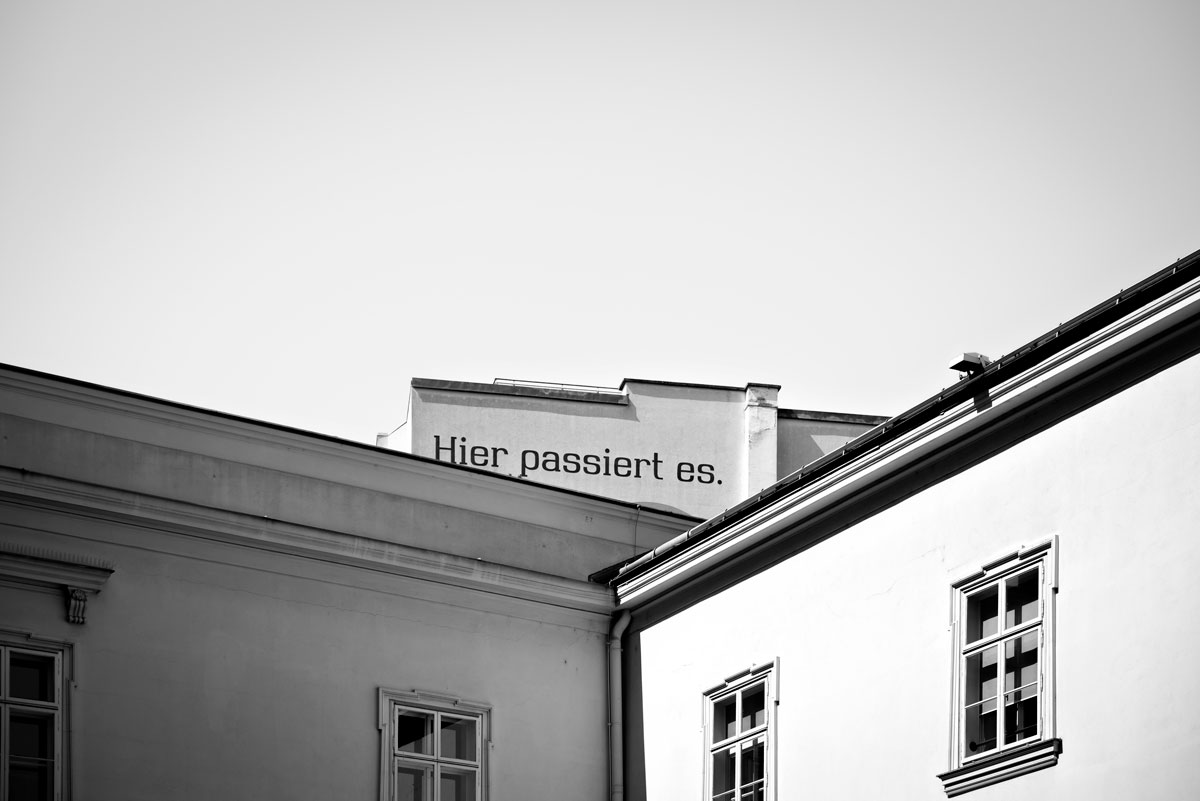
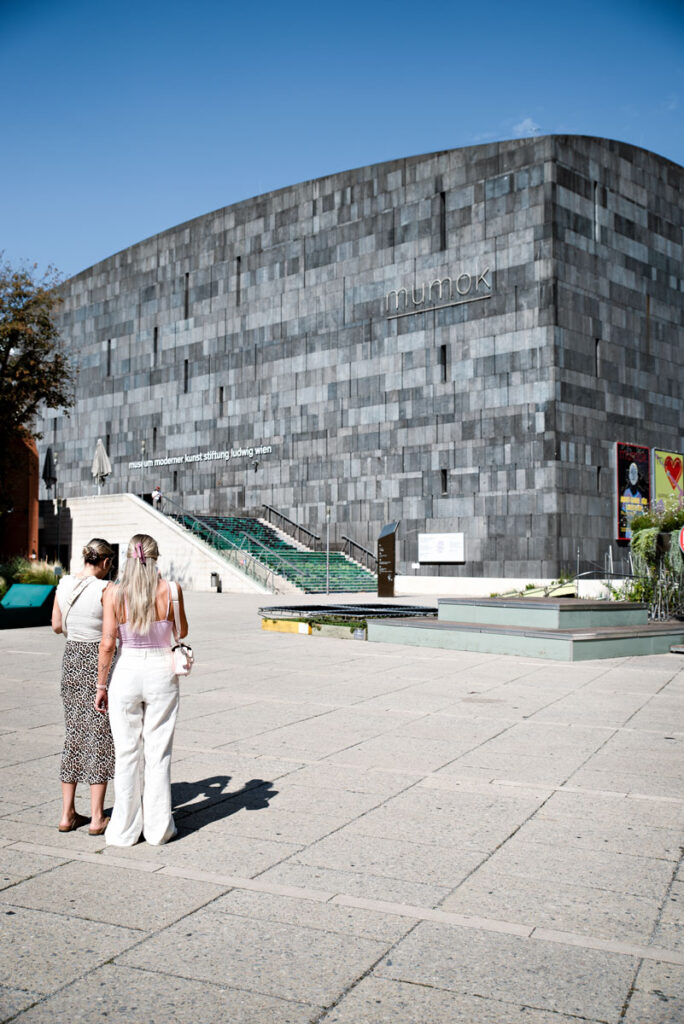
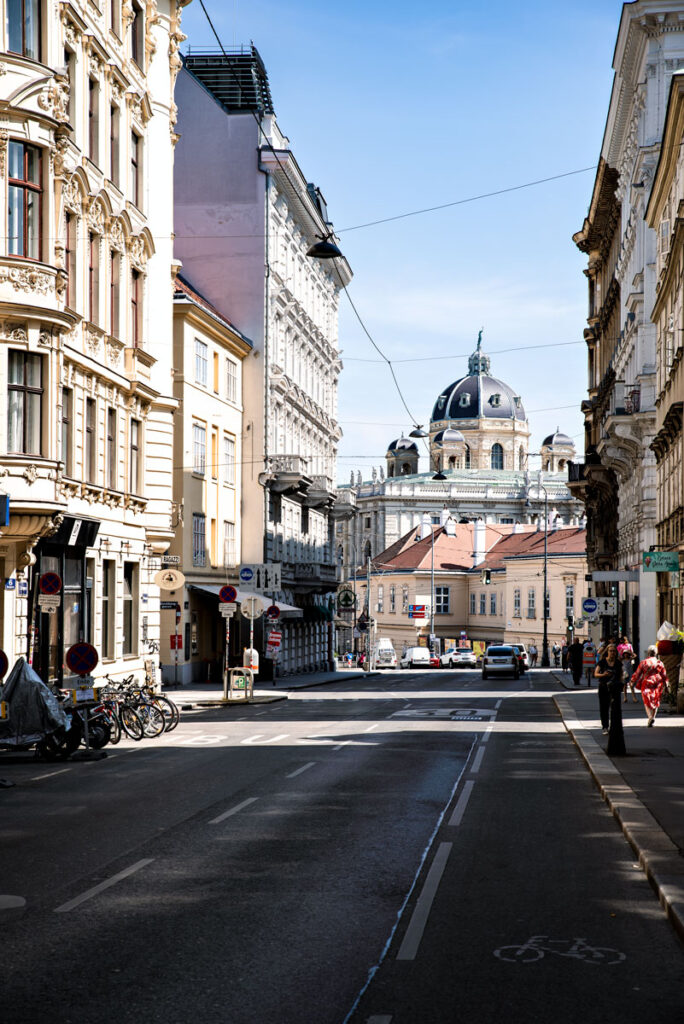
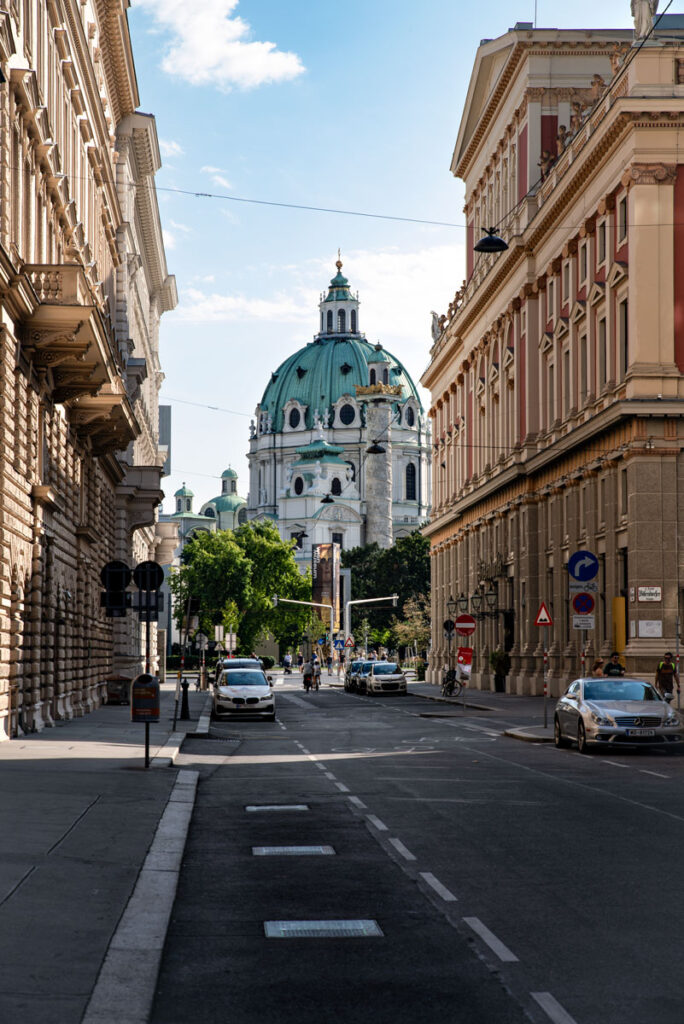
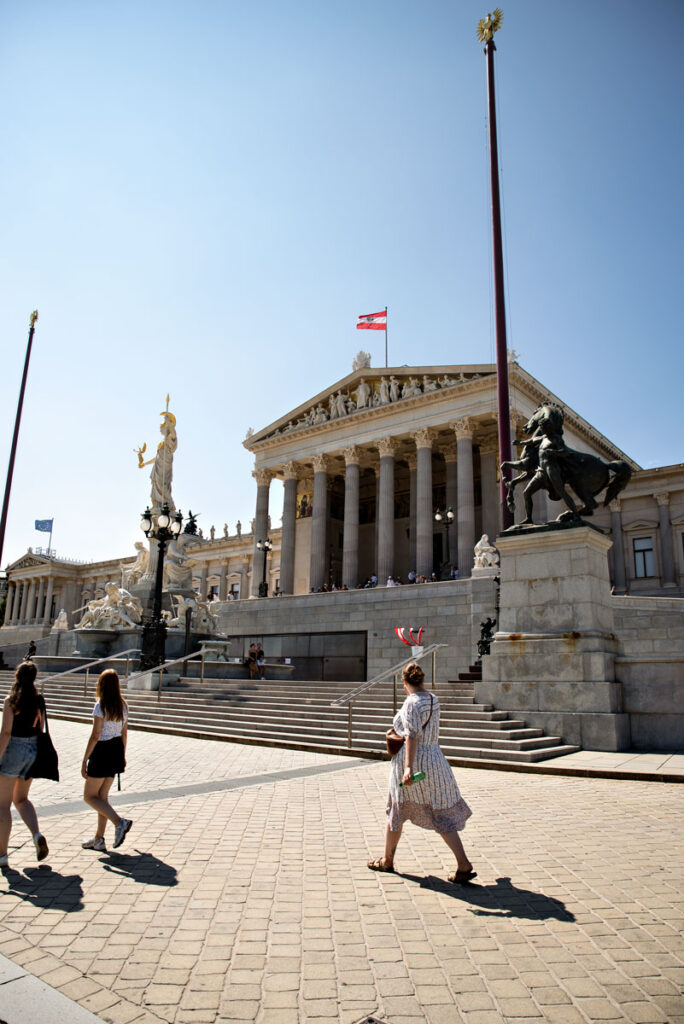
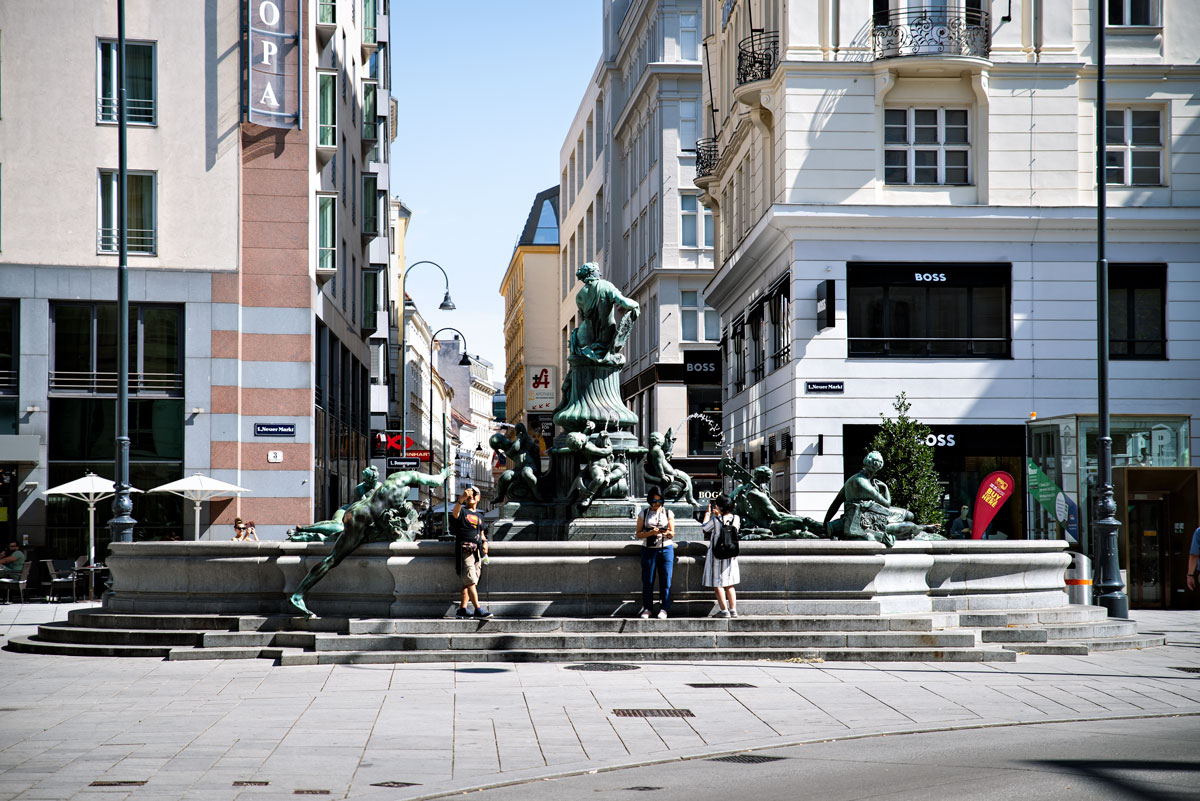
Vienna’s ensemble of buildings may be impressive in its entirety. However, it is the details and small scenes away from the large squares and imposing halls that tell stories. Greek myths carved in stone in front of the Riding School. The couple in the carriage, which hides its eyes behind large luxury sunglasses and lets its gaze wander in an artificially disinterested manner. The goddess of wisdom in front of the Austrian parliament, to which she turns her back. The American woman at Schönbrunn Palace, who can hardly find words in the face of all this pomp and passion turned to stone. Stones tell what should be. People tell what is. So it is a pleasure to drift from one scene to the next and listen to people’s conversations – Vienna has its very own effect on each of them.
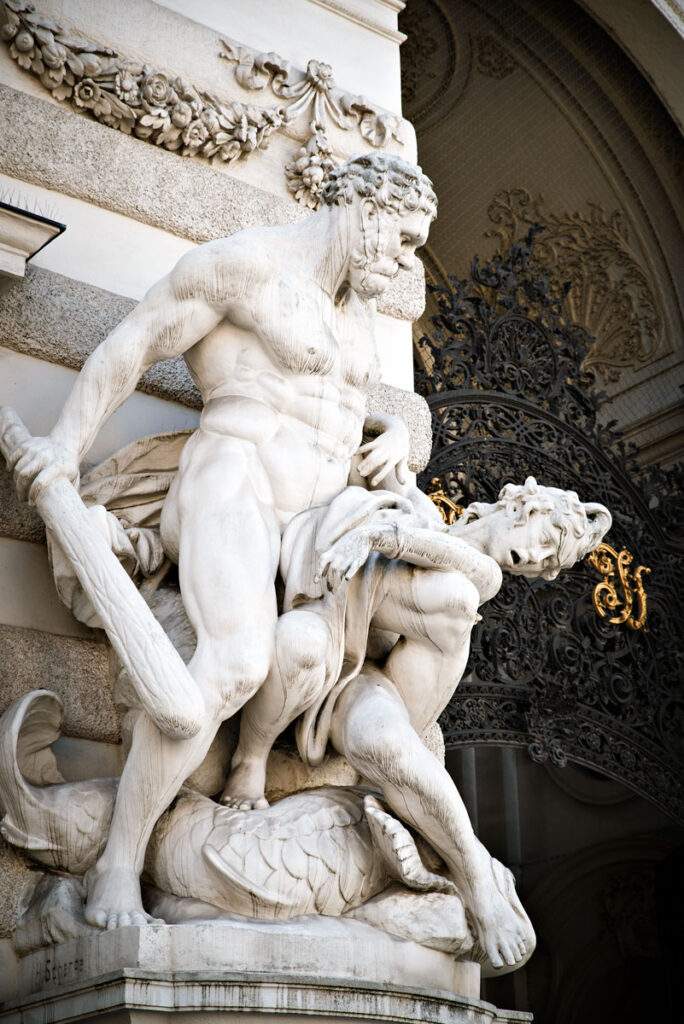
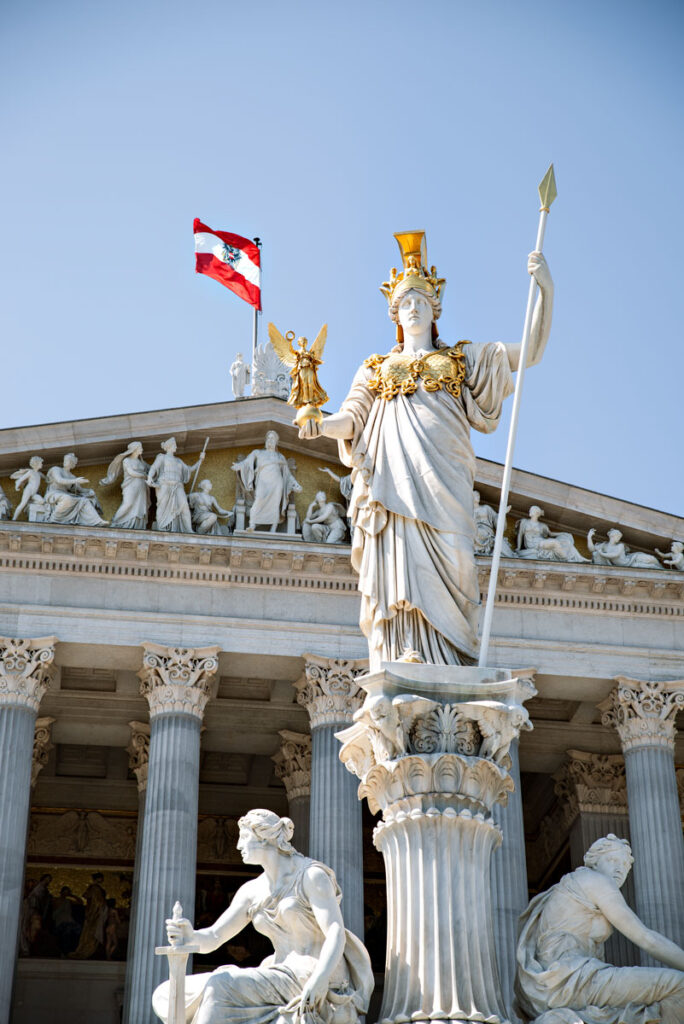
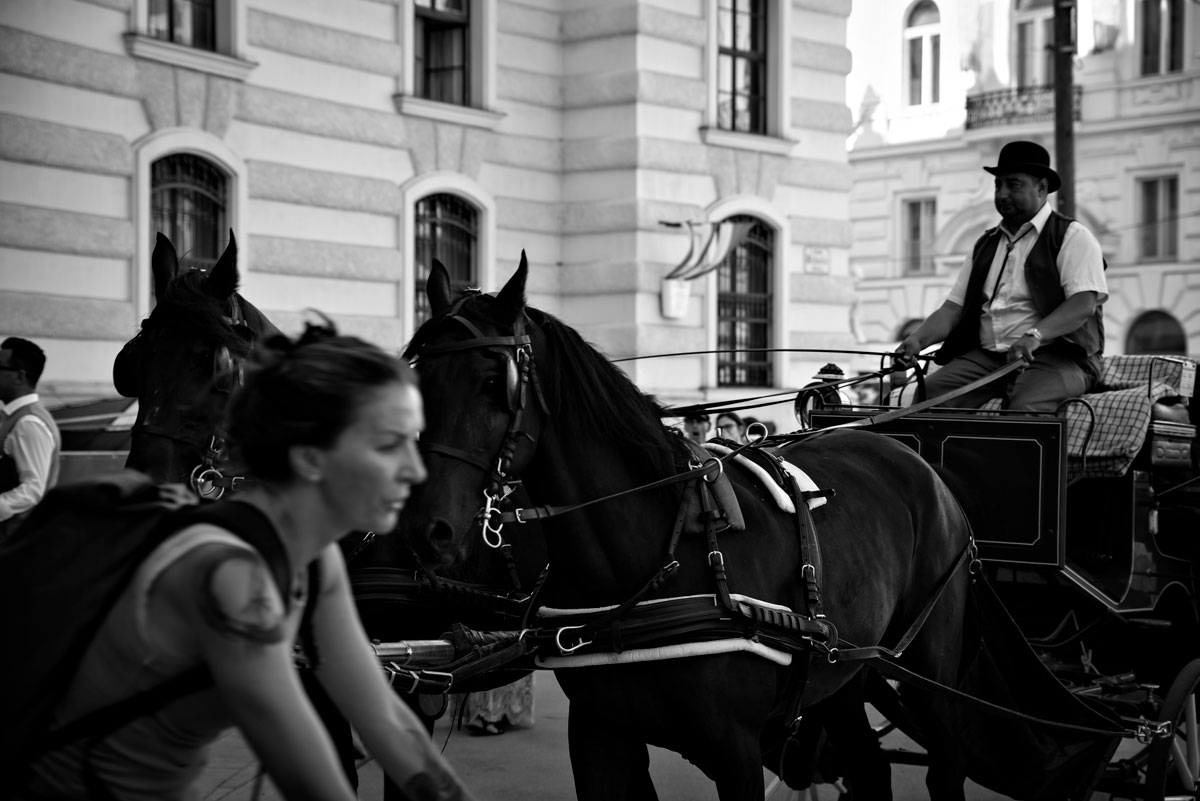
A cluster of people has formed in Kegelgasse. They stick their heads up, sit on the edge of a fountain or stand together in groups to have a chat. The street alongside the house designed by Hundertwasser is full of life. The house itself – a block of flats to be precise – is colorfully painted and makes use of all geometric shapes. Clear lines and edges are barely visible. Small details and the wonderfully green façade and planted roof areas bring together nature, art, humanity and the city. The artist Friedensreich Hundertwasser died on board a cruise ship in the year 2000. The Hundertwasserhaus is also getting on in years. The plaster is crumbling and the colors have turned grey. A dying project?
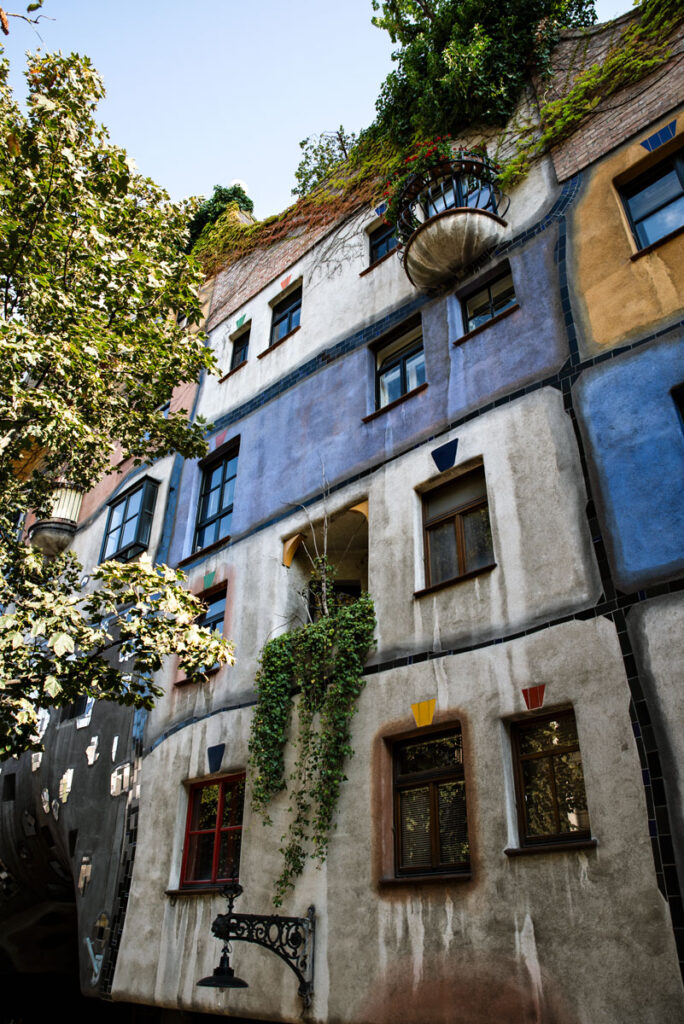

We drive out to Hietzing, a western district on the outskirts of Vienna. We just have to follow the streams of visitors from the subway to get to Schönbrunn Palace. Access to the grounds of this imperial summer residence is completely free. We take advantage of this and take a leisurely stroll along the long paths of the park.
Everything shines with sophisticated symmetry. The architecture is designed around visual axes. Perspective, panoramas, harmony, reflections and sheer imposingness. Every tree, every flower seems planned and purposefully inserted into the arrangement. From the hill of the Gloriette, we have a wonderful view of western Vienna. The Schlossallee leads towards the horizon, the trees are carefully trimmed so that nothing interrupts this visual axis.
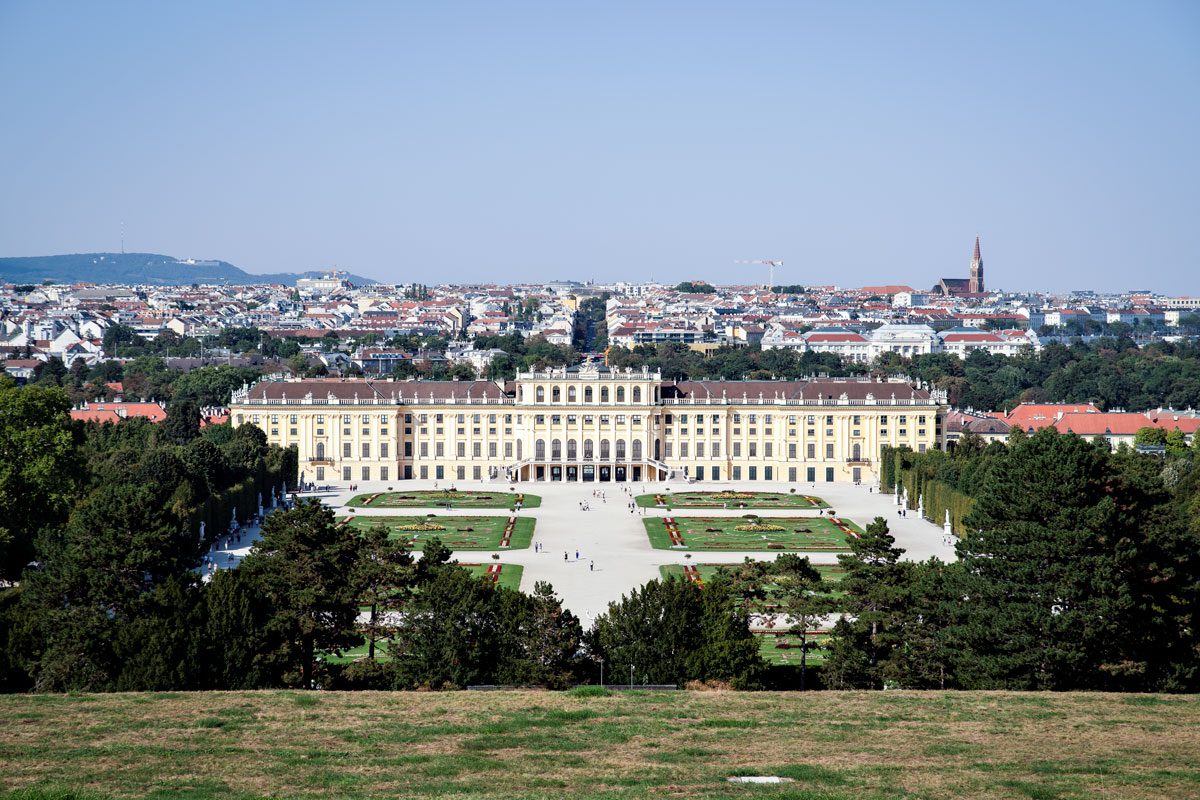
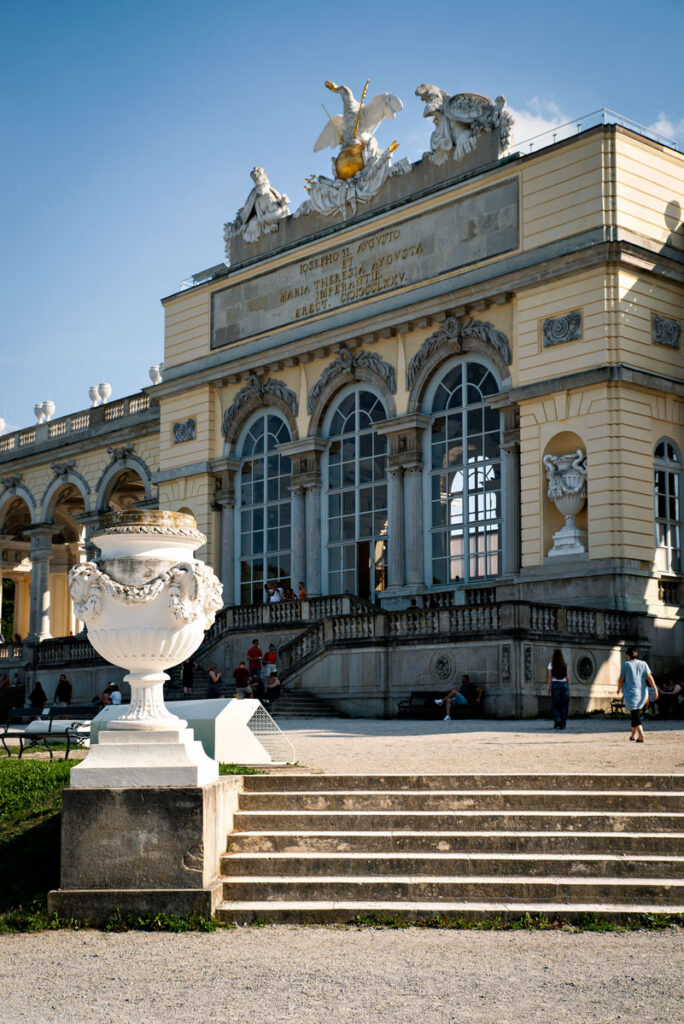
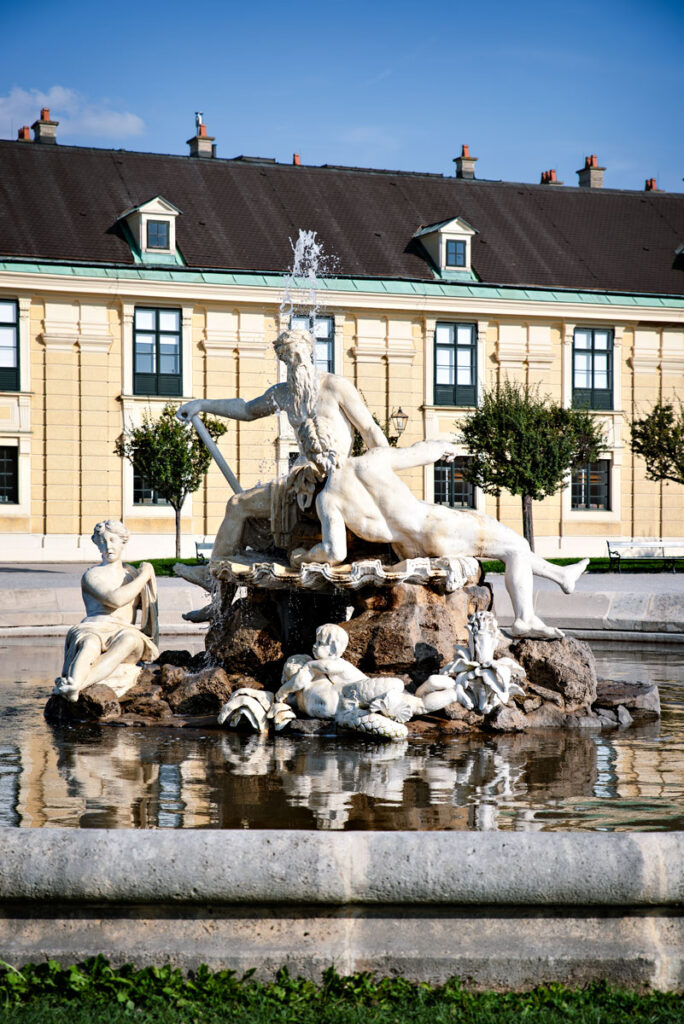
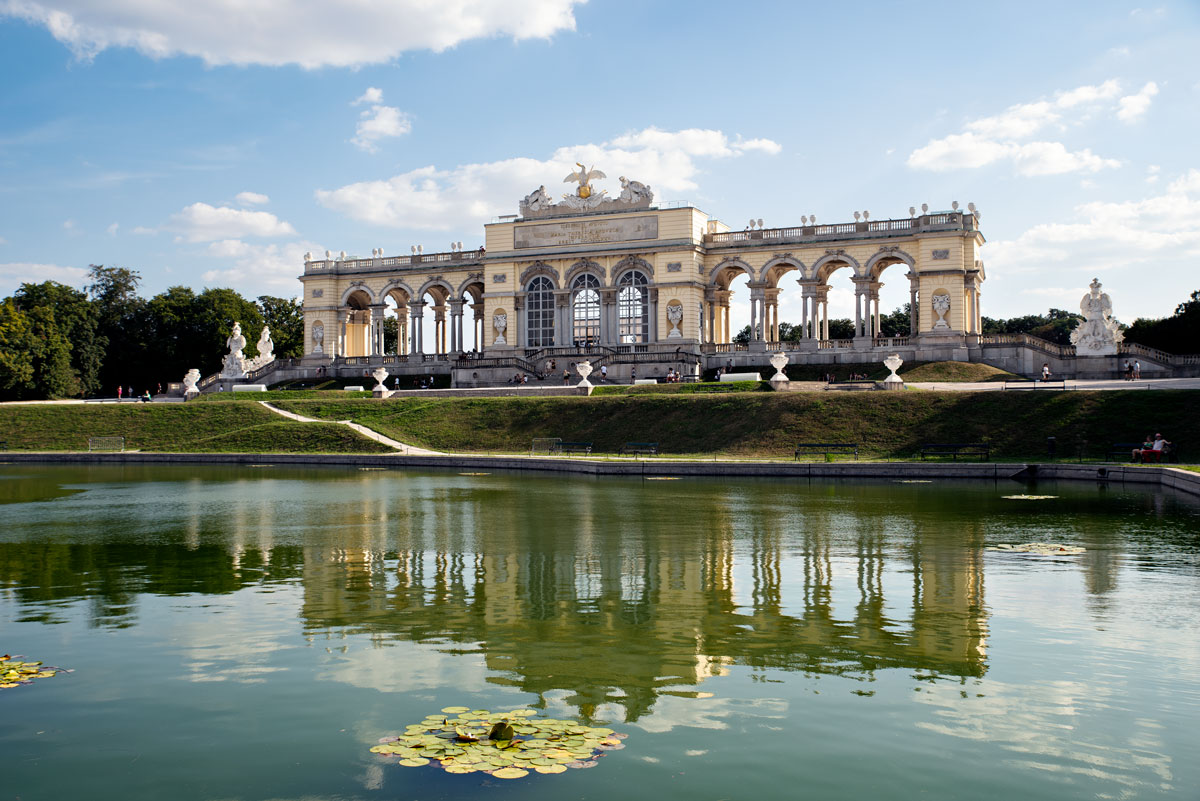
We reach the Prater in the late afternoon. We can see the chain carousel from afar and hear the screams of the speed junkies. The shadows become softer, the light smooth – a photographer’s dream. There are motifs at every corner. Figures and costumes, colors and people, scenes from everyday life, emotions and first dates, cotton candy and children’s dreams. Quickly change the camera battery, then we head for the haunted house. The roller coaster plunges into the depths and a wonderful interplay of light and reflection takes place in the hall of mirrors. The Prater is our personal highlight of our trip to Vienna. It is just as much a world of illusion as the playful buildings of Vienna’s city center or Schönbrunn Palace. Only here, this illusion is condensed into just a few stalls and rides.
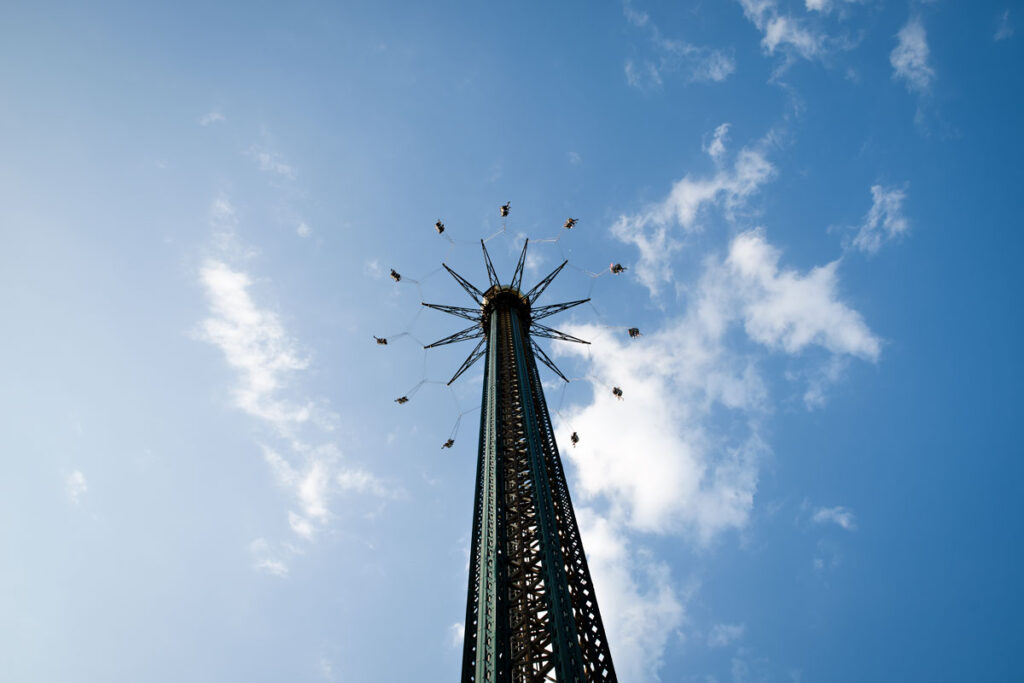
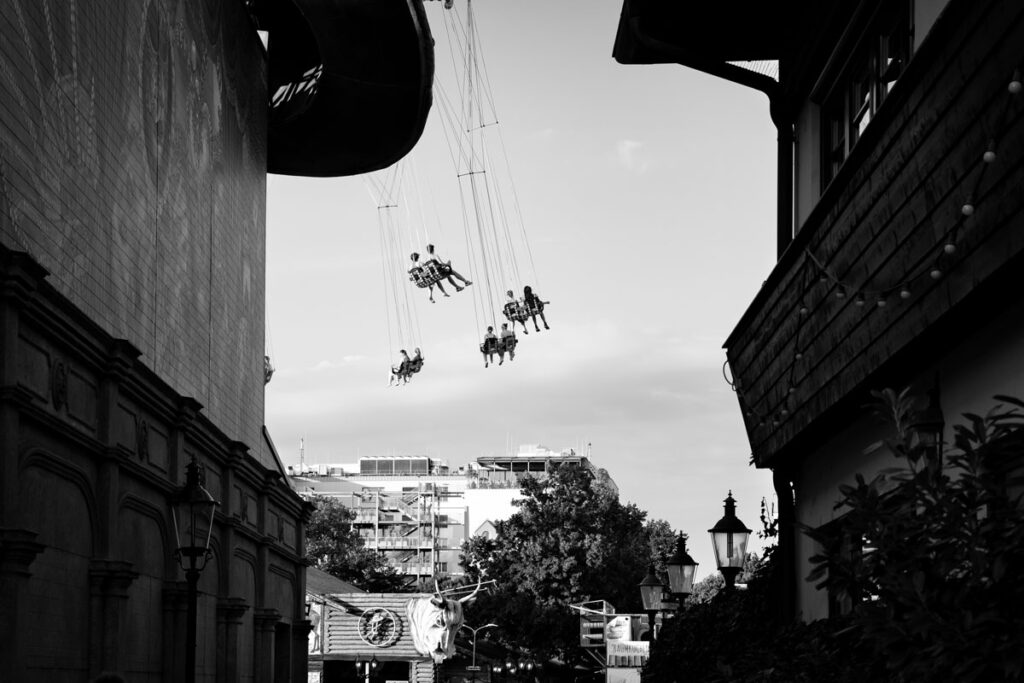
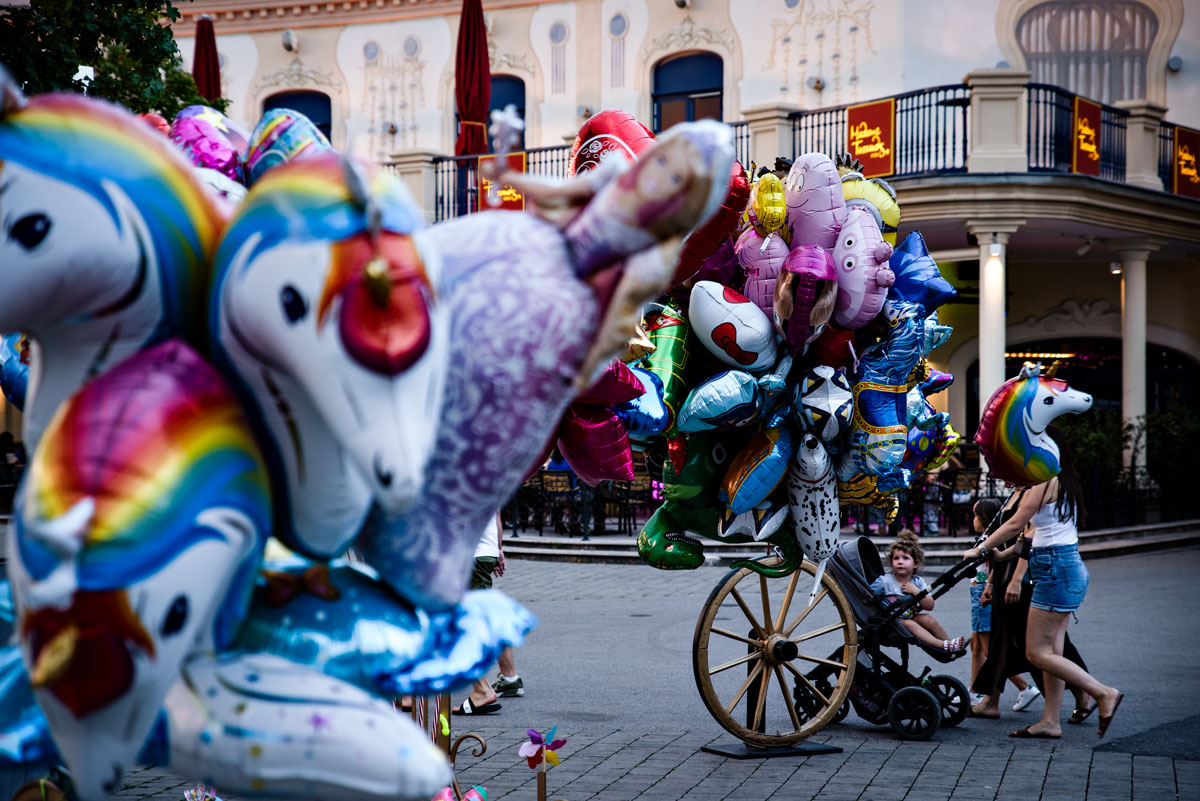
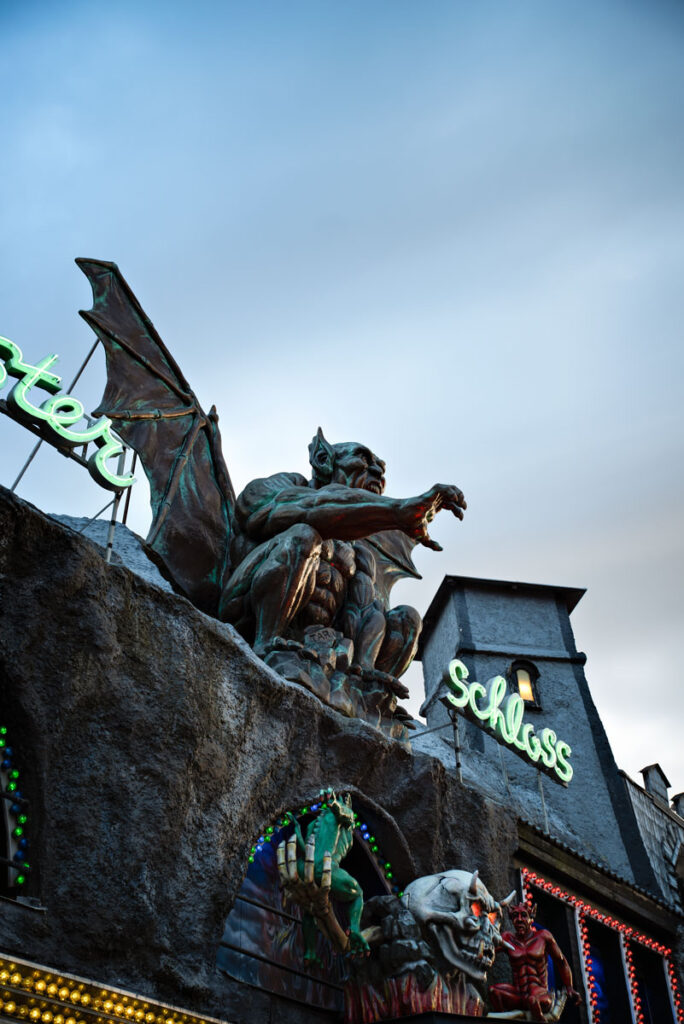
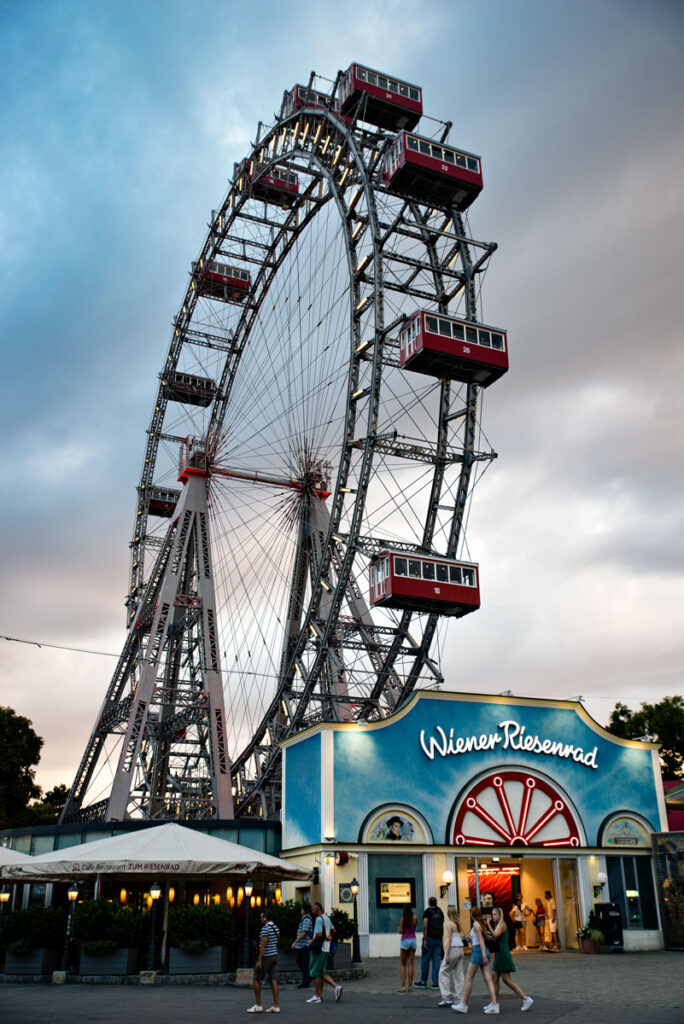
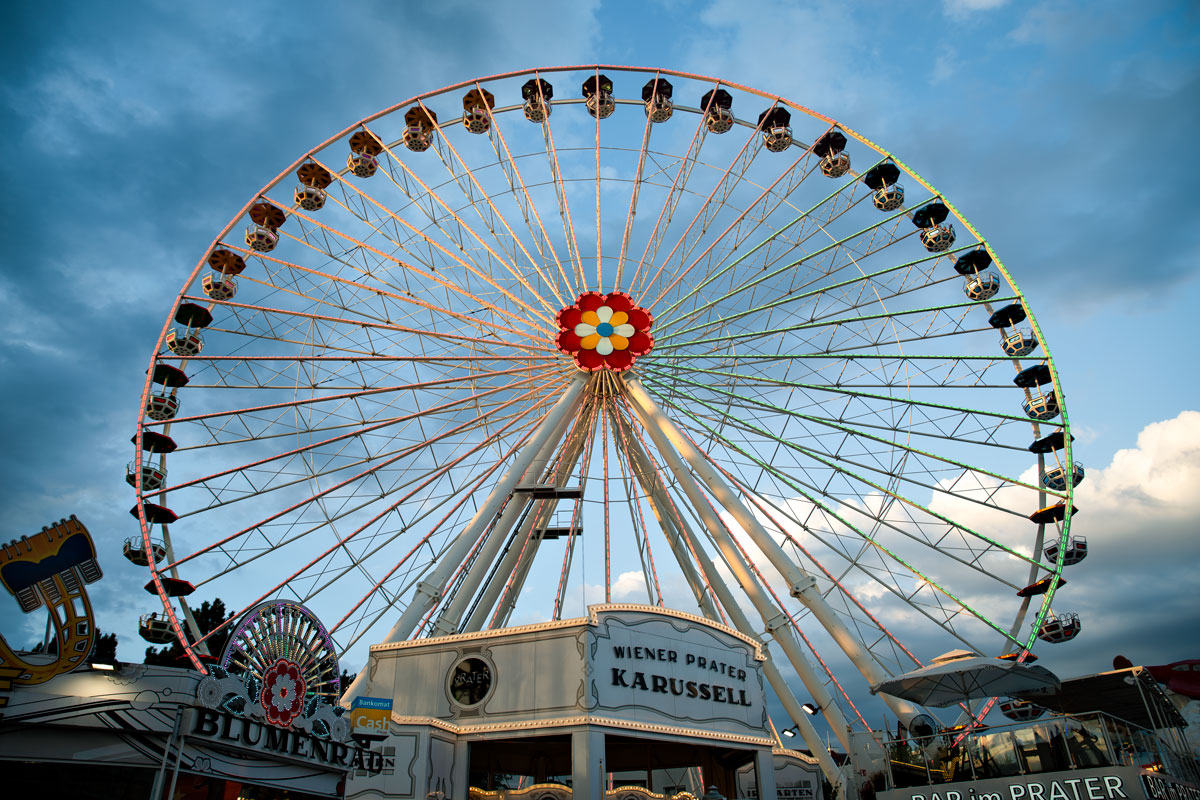
Out of the city, past Innsbruck and overnight at a campsite near Zirl. We are surrounded by wooded hills, with steep mountain walls rising up behind us. A storm is brewing in the afternoon. Purple storm clouds move over the rocks. No thunder, no rain. Instead, wind and weather lights. The windows of our roof tent are closed and additional storm ropes are anchored to the ground. The next morning, the sun wakes us up with gentle rays.
We decide to go on a short half-day hike. About ten kilometers through the surrounding villages, packed only with a sleeping baby and camera backpack. The Inn has formed a mighty valley here. Its water flows fast, it is ice-blue. Summer meadows are a delicate green, fields have been harvested.
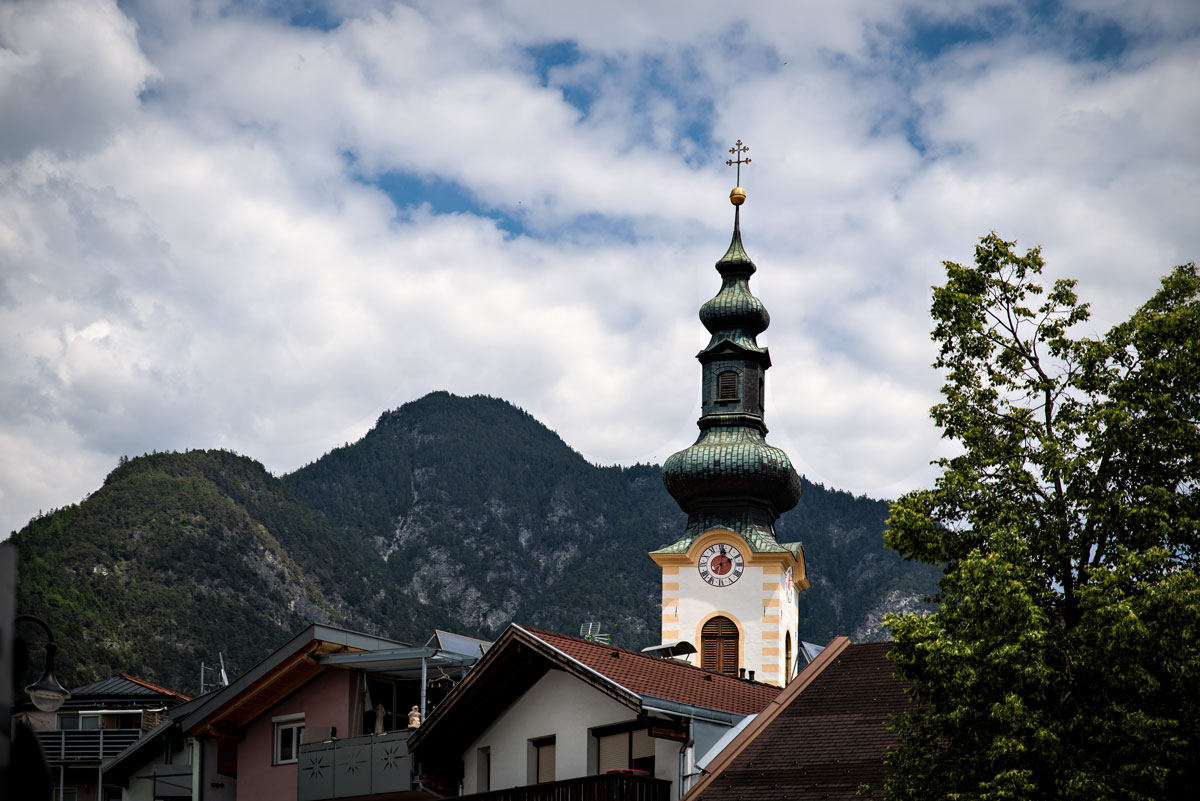
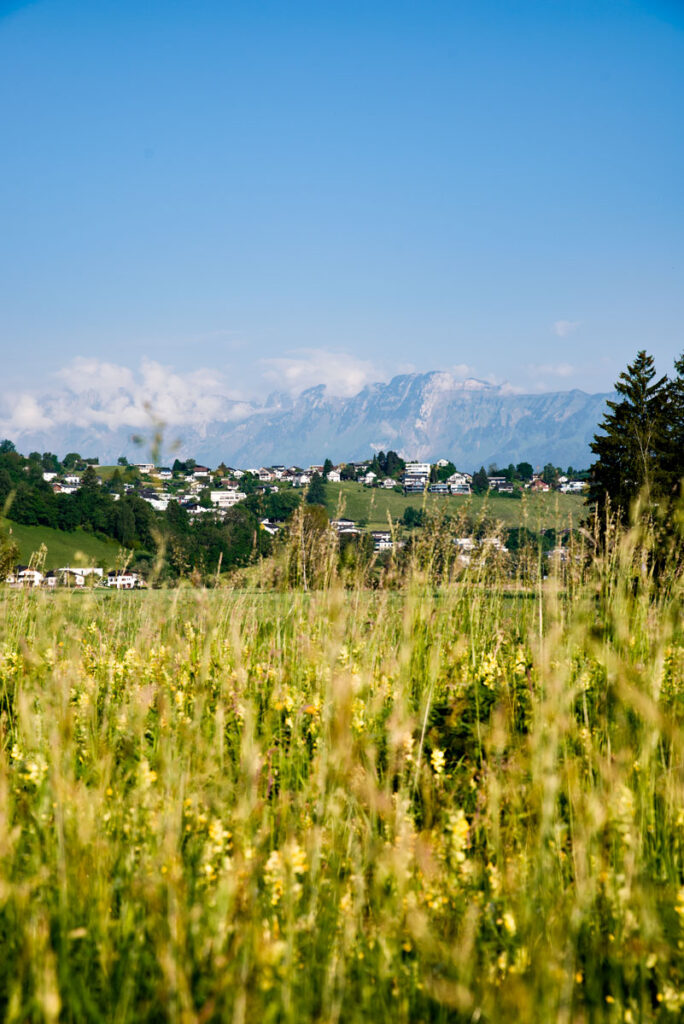
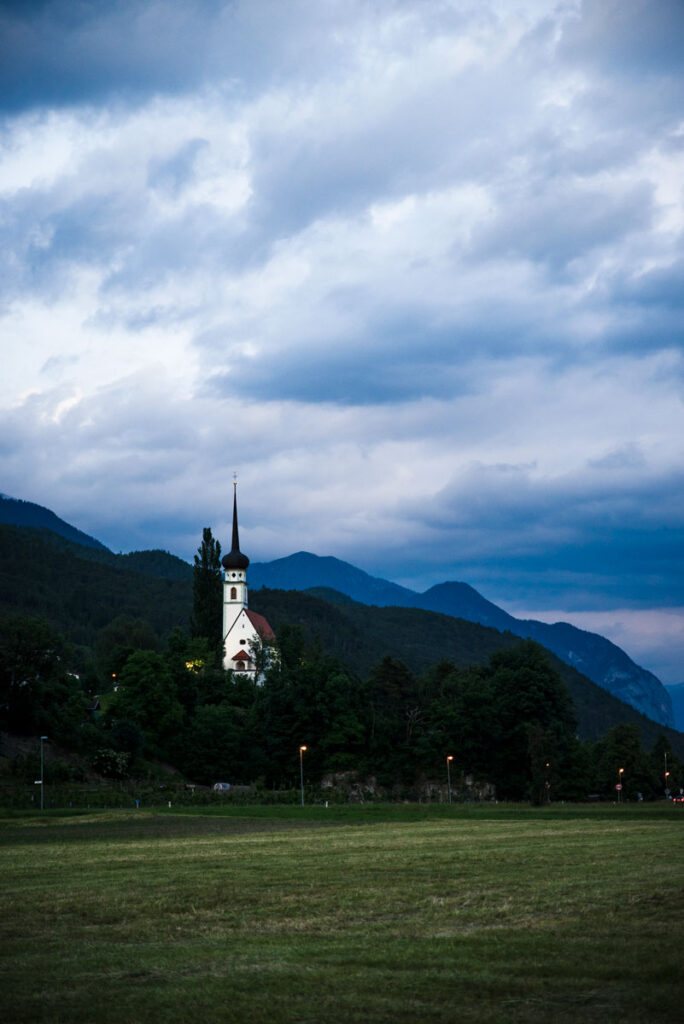

One night in Frastanz before we leave Austria. At the end of the village is Domino’s Pizza & Kebap – a red corrugated iron building that stands out perfectly against the green-blue mountain landscape. After breakfast, we stroll through the village and along a small country lane. Local residents look at us and greet us grumpily. We stop at the bakery for a “Verlängerten”, then we hit the highway. Next time we’ll come just for the mountains.
Info about our trip
Austria is probably one of the most popular vacation destinations for Germans. In winter, it is a great place for skiing, and between spring and autumn, the cities offer a full program of sightseeing and culture. There is also a whole mountain world waiting to be discovered – mountain biking, hiking and climbing are probably the most popular activities on an Austrian vacation.
It’s actually beautiful everywhere. The country is not too big, so you can integrate cities, nature and mountains into your vacation plans in a varied way. Families in particular get their money’s worth here. Outdoor activities and farm vacations are ideal for children of almost any age. And if you end up longing for the sea, it’s only a half-day drive to northern Italy or the Croatian peninsula of Istria. There you can soak up some more sun and enjoy the Mediterranean.
For those who don’t like long-distance travel, Austria also offers the great advantage that you are in a German-speaking country and the Austrians are culturally closest to the Germans compared to all other neighboring countries. This makes your vacation uncomplicated and easy to plan.
Traveling in Austria can be expensive, especially in popular cities such as Vienna and Salzburg and in the Alpine regions during the high season. Hotels and restaurants in the cities tend to be more expensive, but numerous guesthouses and cafés offer inexpensive alternatives with local dishes. Simple meals such as Wiener Schnitzel or Kaiserschmarrn are often affordable. Day and multi-day tickets are available for local public transport, making transportation cheaper. More affordable accommodation can be found in rural areas and smaller towns, and vacation apartments are a budget-friendly alternative for families and longer stays. Statistically speaking, vacationers in Austria spend around 170 euros per day excluding travel to and from the destination. The general costs are similar to those in Germany.
Austrian cuisine is known for its hearty and varied dishes. Classics such as Wiener Schnitzel, traditionally made from veal and often served with cranberries, and Tafelspitz, tenderly cooked beef, are popular throughout the country. Soups such as Frittaten soup (pancake strips in broth) are typical starters. Specialties such as apple strudel, Sacher torte or fluffy Kaiserschmarrn pancakes provide a sweet finish. There are many regional differences: In Tyrol, people like to enjoy dumplings and cheese, while pumpkin products such as pumpkin seed oil are common in Styria.
We have two tips for you in Vienna: At Velani, you can try the classics of Austrian cuisine, which is super tasty and vegan! The restaurant is usually very busy, so a reservation is advisable. And if you want to drink a typical Viennese Melange and eat a slice of Sachertorte with it, then we can recommend Café Schwarzenberg. It is one of the most famous Viennese coffee houses, but is not quite as crowded and overpriced as Café Sacher (it is not even certain that the Sacher torte was actually invented there).
Accommodation in Vienna is quite expensive. You should book a room early, especially in the high and low season. You’ll need to budget at least a hundred euros, more likely more, for a decent room.
The idyllic Tiefental campsite is located near Innsbruck. It is run by an old lady who has the place well under control. The beach campsite in Podersdorf am See, on the other hand, really put us off. We were only there for one night as we had planned to stop there on our way through. It’s a huge site with an incredible number of people and rather cramped pitches. The crowd there is very mixed: from young people partying to families with lots of children to quiet pensioners. The infrastructure of the campsite is not to be complained about, nor the location directly on the lake, but the campsite was too crowded and too turbulent for us.
Austria is a safe travel destination with a low crime rate and well-developed infrastructure. Violent crime is rare and all cities and rural areas are actually safe, even at night. In larger cities such as Vienna or Salzburg, however, you should watch out for pickpockets, especially in busy places and on public transport. The police can be contacted quickly and reliably. Caution is advised for outdoor activities in the Alps: Before hiking or skiing, pay attention to current weather reports and safety warnings. All in all, you can explore Austria with peace of mind.
Austria is a very child-friendly destination and offers numerous activities for families. There are many museums, zoos and parks in cities such as Vienna and Salzburg. Schönbrunn Palace, for example, has a popular zoo and interactive tours for children. The Alpine regions offer exciting outdoor activities such as family-friendly hiking trails, swimming lakes and climbing parks in summer, and ski slopes and ski schools in winter. Farm vacations are also usually an intense experience for children of all ages. Many hotels and restaurants are geared towards families and offer special children’s menus and play areas. Austria is therefore an ideal destination for relaxed family vacations.
Austria offers an excellent transport infrastructure that makes traveling comfortable and easy. Public transportation in cities such as Vienna, Graz and Salzburg is well-developed, with subways, streetcars and buses making it easy to explore. Trains are highly recommended for traveling between cities: ÖBB and Westbahn offer fast connections between major destinations. Night trains are also on the rise again. Those who want to explore rural areas or the Alps are more flexible with a rental car, as some remote places are more difficult to reach. Cycle paths are also well-developed, especially in regions such as the Salzkammergut or along the Danube.
Off-road driving: If you are not out and about in deep snow in Austria in winter, you will rarely have the opportunity to really enjoy off-road driving. The Alpine regions are largely designated as nature reserves. Most field and forest paths are generally closed to motorized vehicles everywhere.
- In Österreichische Geschichte: Von der Urgeschichte bis zur Gegenwart Ernst Bruckmüller provides a very detailed insight into the entire history of the Alpine country
- Karl Vocelka condenses the Österreichische Geschichte into less than 130 pages
- Ideal for children and for reading aloud: Die Geschichte Österreichs in Reimen by Thomas Brezina
